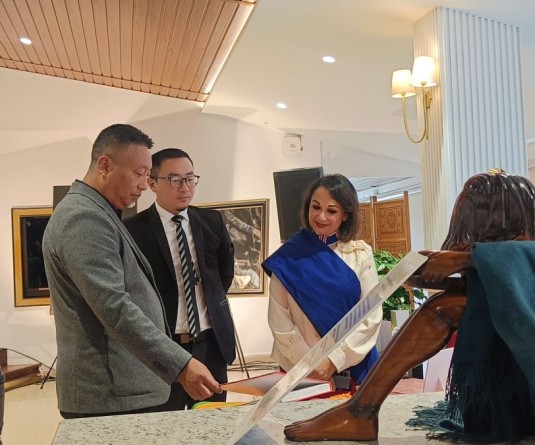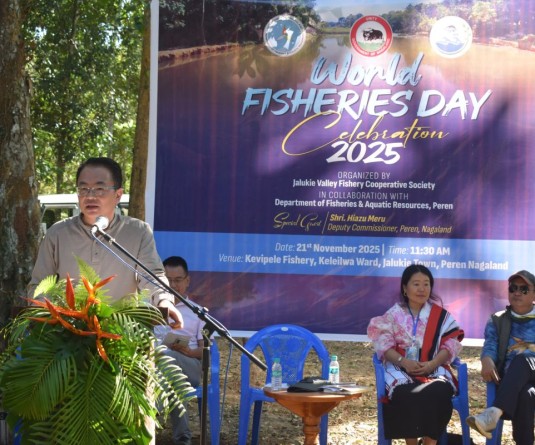
‘International Conference on emerging trends in Nanomaterials Science and Technology’ underway
Morung Express News
Dimapur | January 4
Scientist, professors, researchers and scholars from around the world converged here at NIT Nagaland, Chumukedima, to a brain-storming 3-day ‘International Conference on emerging trends in Nanomaterials Science and Technology.’
Organized by the Department of Science and Humanities, NIT Nagaland, the basic objective of the conference is to bring together international community (professionals, scientists, scholars, and stake holders from academia, government sectors, industry and other organizations) and to establish coordination among them for extensive research collaborations.
The conference also aims to create a congenial atmosphere for the young researchers of NE Region to cultivate their scientific knowledge for further improvement and to discuss and ponder upon on new and exciting advances, challenges and prospects in the advancement of Nanoscience and Technology, covering fields from theory and experiment to applications of advanced materials and nanostructured materials.
In the inaugural session on Wednesday, Prof. Meyya Meyyappan of NASA Ames Research Centre, USA, in his keynote address on the topic ‘Nanotechnology: development of practical systems and nano-micro-macro integration’, said there are strong nanotechnology research programmes across the world with every conceivable application in all economic sectors and that presently, the development of practical systems and commercial products is the next big challenge.
The NASA scientist said in many cases, the development of practical systems demands seamless integration of nano-micro-macro to produce sealed components and processes. “While the ultimate vision in nana technology may be an entirely bottom-up approach to building systems, it is unrealistic to expect this to happen anytime in the foreseeable future. Only realistic possibility to achieve tangible results in a reasonable time-frame, before the stakeholders run out of patience, is to use nano materials in a hybrid approach that involves a systematic nano-micro-macro integration”, he said.
Meyyappan said such an approach will also allow mankind to utilize the existing infrastructure in the micro area (MEMS, microelectronics) from the last couple of decades, which would make economic sense.
The plenary talks in the morning session also included presentations by Prof. VV Srinivasu, department of Physics, University of South Africa and Prof. SM Shivaprasad of Jawarharlal Nehru Centre for Advanced Scientific Research, Bengaluru.
Prof. Srinivasu who spoke on ‘Josephson Junctions in the context of qubits and nano squids: a game at nano scale’, said constriction type Josephson Junctions are gaining momentum as they can be directly integrated into chips and further at nano scale, these Josephson junctions can be used as qubits and for nano squids.
Prof. Shivaprasad in his presentation on ‘Electron and optical confinement effects observed in Gallium nitride nanostructures’, said as evident from the Nobel Prize in Physics 2014 and the use of LEDs for lighting and displays, there has been a great surge in fabricating device structures from wide-band gap III-nitride semiconductors.
He said the band-gap tenability of these materials and attributing electron and optical confinement properties by nanostructuring, has widened their multi-functionality and applicability.





